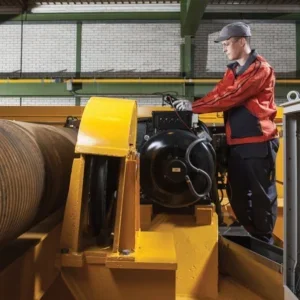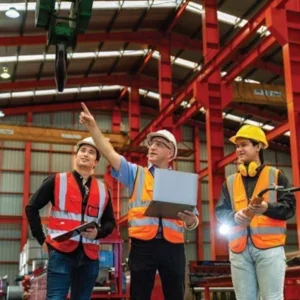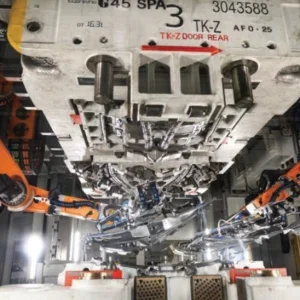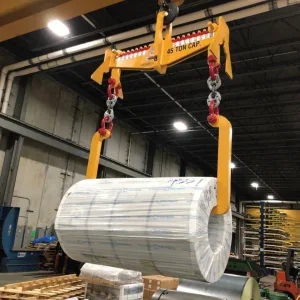Accurate speed control of a skip hoist has cut downtime and reduced noise at Conoco’s Humber Dock silo facility in the UK with the installation of an ACS 600 AC drive from ABB Industrial Systems Limited.
Electrical repairs on the hoist are down by 90% and mechanical maintenance has been halved because of the new drive, it is claimed.
The 90kW Direct Torque Control (DTC) drive replaced an old AC slip ring reversing motor controlling the drum winding operation on the skip hoist. DTC enables the drive to give full torque control of the hoist from zero to full speed, without an encoder.
The smoother acceleration and deceleration of the hoist has led to less wear and tear on the gearboxes, resulting in reduced maintenance downtime.
“The gearboxes used to shudder and clank during speed changes,” says Dave Waddingham, electrical design engineer at the Humber refinery. “With the old system we even managed to send buckets flying through the roof of the silo occasionally,” he adds with a laugh. But there have been no such problems with the new drive system, Waddingham says.
The drive system was designed and commissioned by specialist drive engineers Halcyon Drives as part of a complete refurbishment of an old motor control centre (MCC) at the site. The slip ring reversing contacts of the original AC motor were in the old MCC which has been scrapped to free some much needed space.
“We decided to go up market and change the slip ring motor for a variable speed drive controlling an IP 55 squirrel cage motor and the site already uses ABB drives,” says 0Waddingham.
The skip hoist has two buckets, one top and bottom, which lift 7t loads of petroleum coke vertically, through 30m from a ground-level hopper onto a conveyor system for transport to a series of dockside silos. From here the coke, a refinery by-product used to make carbon electrodes for aluminium smelting, is loaded onto ships for worldwide distribution.
“The skip hoist control system is actually very complicated because it is partly time-based and partly triggered by limit switches,” says Waddingham. Like the entire conveyor system on the site the drive is controlled through a programmable logic controller (PLC).
The skip hoist control system works on a set of limit switches fed into the PLC which then tells the drive to slow down or speed up accordingly. As the bottom bucket travels below ground into the hopper it trips a flap and is filled. The bucket is held on a disc brake during filling, which takes around seven seconds. The ACS 600 drive then moves the fully loaded bucket at slow speed (480min-1) for 30 seconds, through a slight curve, until it has cleared the hopper. Then it is quickly accelerated to a top speed of 960min-1 as the heavy load is lifted vertically to the conveyor.
At the top, the bucket passes a slow-down limit switch and the drive smoothly brings the bucket to a complete standstill, holding its position while the petroleum coke is emptied onto the conveyor. Bucket positioning during unloading does not need to be very accurate and the drive is easily able to bring the 7t load from full speed to standstill within the required 150mm limit. It takes two and a half minutes to complete a cycle.
Integrating the ACS 600 with the PLC proved simple as the drive has built-in digital input/output (I/O). “During commissioning Halcyon discovered that the empty bucket was causing regeneration back into the system as it accelerated downwards, but they quickly solved this by adding regenerative braking resistors,” explains Waddingham.






